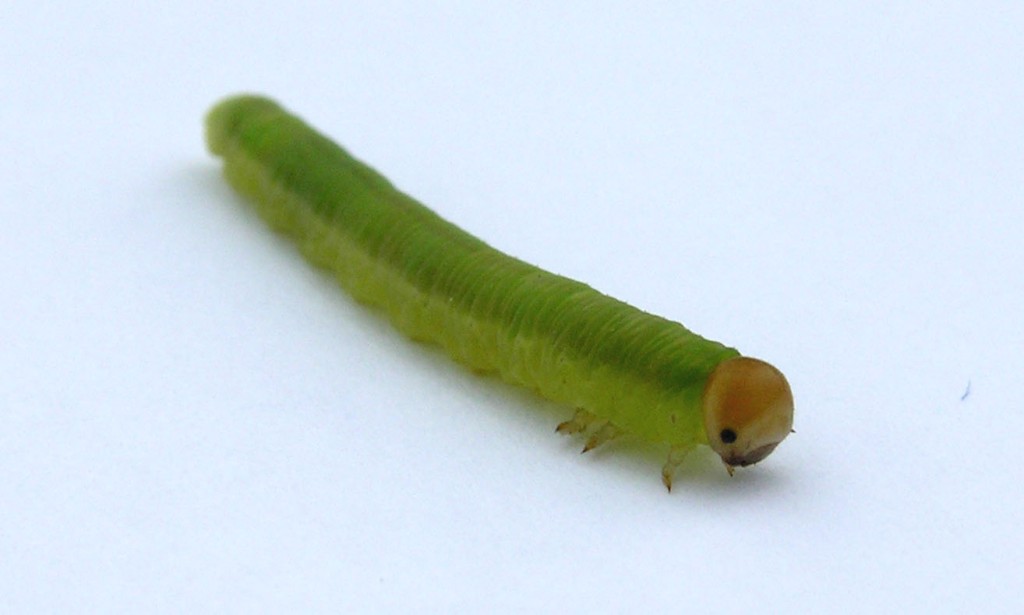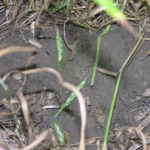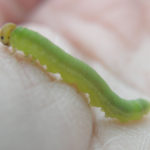Several wheat fields were found with grass sawfly north of London from Hyde Park to Kintore and St. Marys. Damage averaged anywhere from 3 heads clipped per square meter to 30 heads clipped per square meter! Reports have also come in from Rodney, Glencoe, Molesworth, Brussels and now northern Huron County.

Scout fields to determine if sawfly is present. All fields infested look fine until you part the wheat plants and look at the canopy floor. Only then do you see the number of heads laying on the ground. These larvae don’t seem to bother eating the leaves but instead climb the plant and clip the heads right off.


Finding the actual larvae is difficult. They do feed during the day but blend in very well with the wheat. Shake plants in a square meter to force the larvae to drop. Then part the wheat plants and count the number larvae and clipped wheat heads laying on the ground. The larvae curl into a C shaped when they first drop so look for a small green ball on the ground. Armyworm larvae may also be present (though they too are much greener than we are used to seeing them) but armyworm infestations seem to be low in general. It appears that it really is the sawfly causing the majority of the clipping.
Thresholds based on the number of larvae per foot of row may be tough to determine. Delaware’s threshold is 0.4 larvae per foot of row. Taking into consideration the number of heads being clipped may be a safer assessment. 30 heads clipped per square meter or 3 per square foot should equal the cost of control. Just make sure that the larvae are present still in the field.
We’re not sure how long the feeding will continue. Most of the larvae I have seen are close to full size. The larvae live for approx 30 days then burrow in the ground and stay in hibernation until next spring when they pupate and emerge as an adult sawfly. So there will be an end in sight though I can’t exactly say when yet.
Out checking the wheat tonight and found grass sawfly larva feeding on the wheat, some fields probably at threshold. We are in Howick Township, northern Huron County.
Can these sawfly larva be found in East Tecas. I have found several of these in my St. Augustine grass. Are they damaging to the grass?
Hi Jim. Do you mean that you are seeing larvae right now or earlier this summer? Grass sawfly are not active right now. They are in the soil as a prepupa waiting for next spring to come out as adults. So if it is something you are seeing right now then it is a different insect. Perhaps green cloverworm?